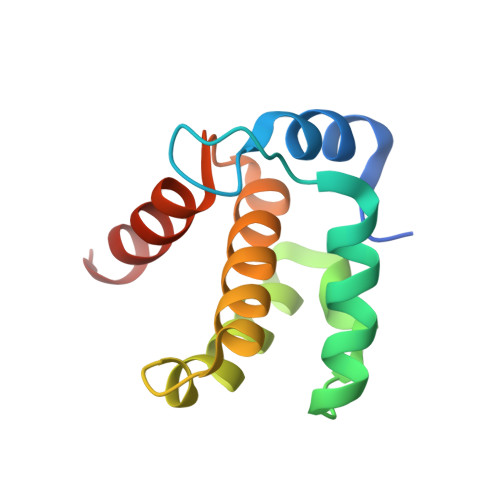Enantiomeric Atropisomers Inhibit HCV Polymerase and/or HIV Matrix: Characterizing Hindered Bond Rotations and Target Selectivity.
Laplante, S.R., Forgione, P., Boucher, C., Coulombe, R., Gillard, J., Hucke, O., Jakalian, A., Joly, M.A., Kukolj, G., Lemke, C., McCollum, R., Titolo, S., Beaulieu, P.L., Stammers, T.(2014) J Med Chem 57: 1944-1951
- PubMed: 24024973
- DOI: https://doi.org/10.1021/jm401202a
- Primary Citation of Related Structures:
4JMU, 4JVQ - PubMed Abstract:
An anthranilic acid series of allosteric thumb pocket 2 HCV NS5B polymerase inhibitors exhibited hindered rotation along a covalent bond axis, and the existence of atropisomer chirality was confirmed by NMR, HPLC analysis on chiral supports, and computational studies. A thorough understanding of the concerted rotational properties and the influence exerted by substituents involved in this steric phenomenon was attained through biophysical studies on a series of truncated analogues. The racemization half-life of a compound within this series was determined to be 69 min, which was consistent with a class 2 atropisomer (intermediate conformational exchange). It was further found by X-ray crystallography that one enantiomer of a compound bound to the intended HCV NS5B polymerase target whereas the mirror image atropisomer was able to bind to an unrelated HIV matrix target. Analogues were then identified that selectively inhibited the former. These studies highlight that atropisomer chirality can lead to distinct entities with specific properties, and the phenomenon of atropisomerism in drug discovery should be evaluated and appropriately managed.
- Departments of Chemistry and Biological Sciences, Boehringer Ingelheim (Canada) Ltd. , 2100 Cunard Street, Laval , Quebec H7S 2G5, Canada.
Organizational Affiliation:


















